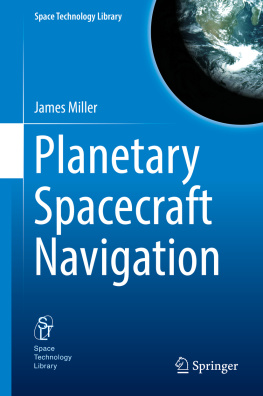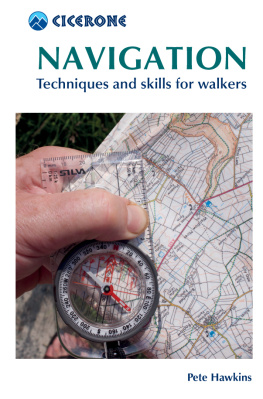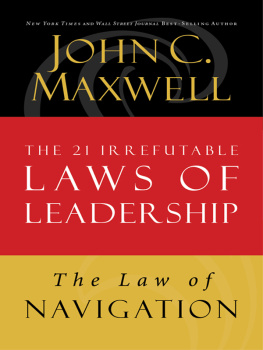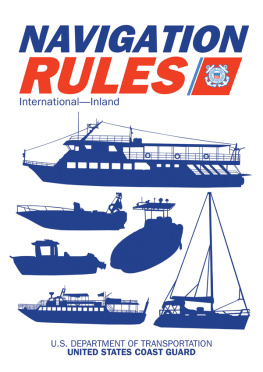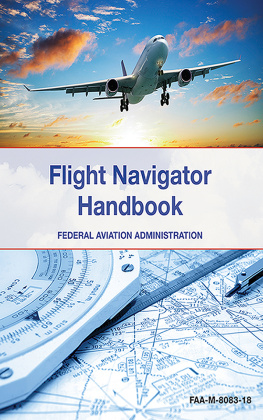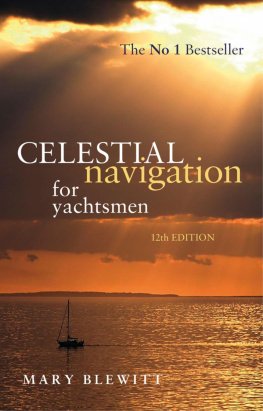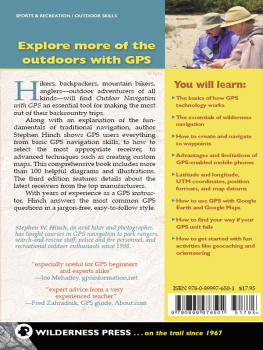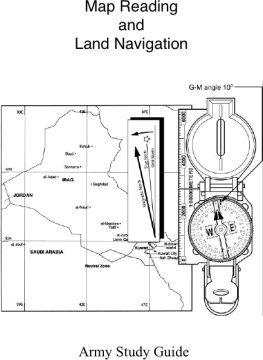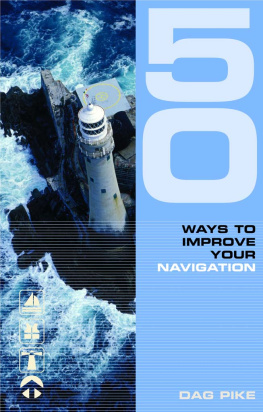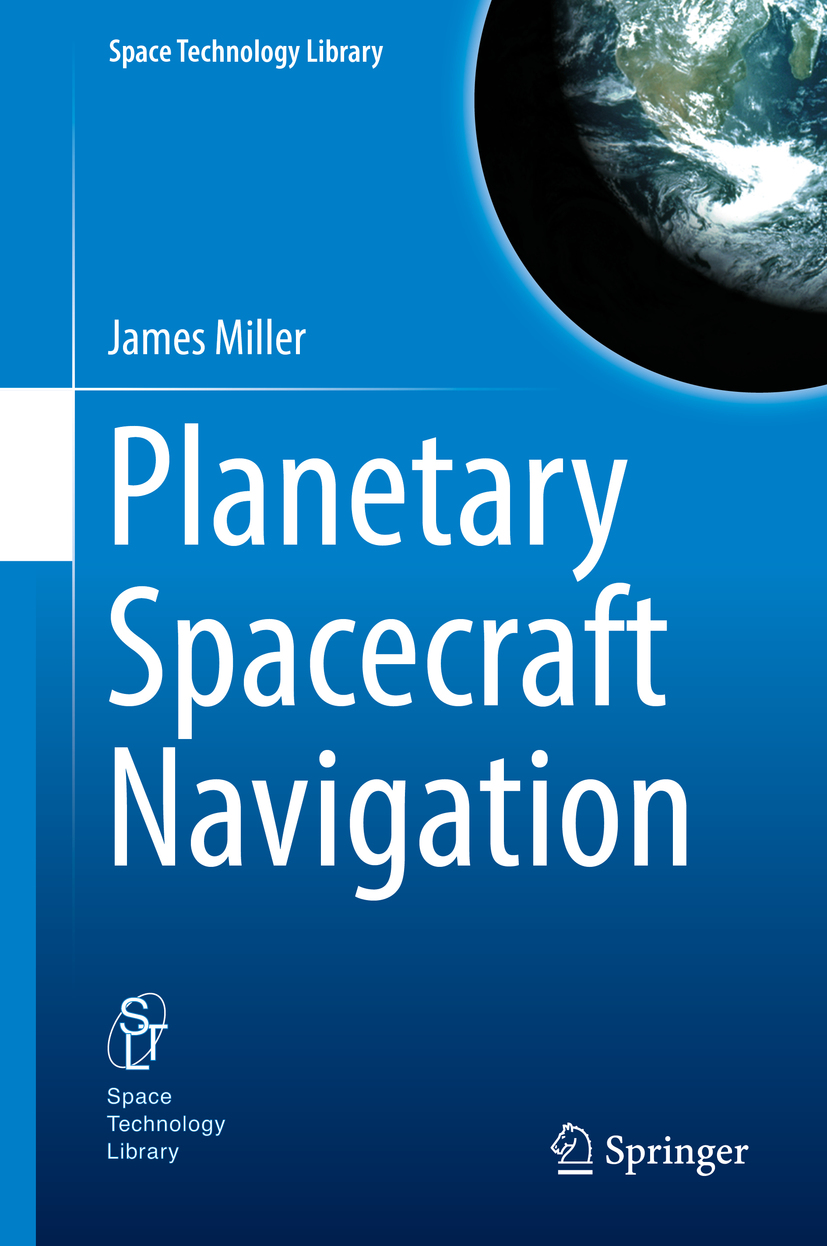Volume 37
Space Technology Library
Editor-in-Chief
James R. Wertz
Microcosm, Inc., El Segundo, CA
Editorial Board
Roland Dor
Professor and Director International Space University, Strasbourg
Tom Logsdon
Senior member of Technical Staff, Space Division, Rockwell International, USA
F. Landis Markley
NASA, Goddard Space Flight Center, USA
Robert G. Melton
Professor of Aerospace Engineering, Pennsylvania State University, USA
Keiken Ninomiya
Professor, Institute of Space & Astronautical Science, USA
Jehangir J. Pocha
Letchworth, Herts
Rex W. Ridenoure
CEO and Co-founder at Ecliptic Enterprises Corporation, USA
Gael Squibb
Jet Propulsion Laboratory, California Institute of Technology, USA
Martin Sweeting
Professor of Satellite Engineering, University of Surrey, UK
David A. Vallado
Senior Research Astrodynamicist, CSSI/AGI, USA
Richard Van Allen
Vice President and Director, Space Systems Division, Microcosm, Inc., USA
Published jointly by Microcosm Press and Springer
The Space Technology Library Editorial Board
More information about this series at http://www.springer.com/series/6575
James Miller
Planetary Spacecraft Navigation
James Miller
Porter Ranch, CA, USA
Space Technology Library
ISBN 978-3-319-78915-6 e-ISBN 978-3-319-78916-3
https://doi.org/10.1007/978-3-319-78916-3
Library of Congress Control Number: 2018945424
Springer International Publishing AG, part of Springer Nature 2019
This work is subject to copyright. All rights are reserved by the Publisher, whether the whole or part of the material is concerned, specifically the rights of translation, reprinting, reuse of illustrations, recitation, broadcasting, reproduction on microfilms or in any other physical way, and transmission or information storage and retrieval, electronic adaptation, computer software, or by similar or dissimilar methodology now known or hereafter developed.
The use of general descriptive names, registered names, trademarks, service marks, etc. in this publication does not imply, even in the absence of a specific statement, that such names are exempt from the relevant protective laws and regulations and therefore free for general use.
The publisher, the authors and the editors are safe to assume that the advice and information in this book are believed to be true and accurate at the date of publication. Neither the publisher nor the authors or the editors give a warranty, express or implied, with respect to the material contained herein or for any errors or omissions that may have been made. The publisher remains neutral with regard to jurisdictional claims in published maps and institutional affiliations.
This Springer imprint is published by the registered company Springer Nature Switzerland AG
The registered company address is: Gewerbestrasse 11, 6330 Cham, Switzerland
Preface
This book is based on my 50 years of experience in navigation of Earth entry vehicles, Minuteman ballistic missiles, and planetary spacecraft. At the Jet Propulsion Laboratory, I worked on the Mariner 6, Viking, Pioneer, Galileo, and Near Earth Asteroid Rendezvous missions. At KinetX Inc. I worked on the MESSENGER and New Horizons missions. In writing this book I have drawn on engineering memoranda, conference papers, and publications I have written as well as many notes that I have accumulated over many years. My purpose is to present a book that will describe how navigation is done. The emphasis is on mathematics that have been coded in computer programs used for mission operations. Therefore, the derivations are given in detail since relatively little mathematics actually makes it into operational software. The mathematics that do are generally straightforward, but the programs are large and complex and must be virtually error free. In writing this book, I have frequently checked the mathematics by looking at computer code that I am confident is correct.
Chapter . The navigation system and navigation operations procedures are constantly evolving. An overview is given that applies to all navigation systems. It is conservatively estimated that there is at least one navigation system for each person doing navigation operations. The final chapter is anecdotal and describes some navigation analyses I performed over the years. My purpose is to describe the type of analyses the reader would be expected to perform if he or she pursued a career in navigation. I hope I have succeeded in convincing the reader that navigation is a lot of fun.
Planetary spacecraft navigation is the result of the work of many individuals including the author of this book. The person who had the original idea is often not known. I have mentioned some individuals in the text who I am aware of and made some significant contribution. Some are contemporary and known personally, but often these individuals are mathematicians and have lived over a 100 years ago. I have made little effort to search the literature and track down the original source. Most of my acknowledgments are anecdotal and the source is discussions in the coffee room that have not been verified. There are a few who have contributed directly to the writing of this book. My wife, Dr. Connie Weeks, Professor Emeritus of Mathematics, Loyola Marymount University, is the source of a large amount of my limited knowledge of mathematics. I cannot recall a question about mathematics where she did not have an immediate answer. The person most responsible for this book being written is Dr. Gerald Hintz who teaches at the University of Southern California. I have known him for about 50 years and since I started writing this book 20 years ago, he has kept encouraging me to finish. Writing this book has not been as difficult as I thought it would be, but rather an enjoyable experience. I must also acknowledge my mother, Eunice Miller, who thought it would be a good idea for me to be the first one on either side of my family to go to college. My sisters, Peggy Joyce, Nan Elizabeth, and Linda Lee, also got behind this major effort and I will be forever indebted to them.
I am particularly indebted to the editors at Springer International Publishing. Hannah Kaufman and Maury Solomon showed great patience in leading me through the process. The production people headed by Batmanadan Karthikeyan transformed my manuscript into what I regard as a work of art.
James Miller
Porter Ranch, CA, USA
Contents
Answers to Selected Exercises
Index
1. Equations of Motion
1.1 Introduction
The equations of motion describe the path that a spacecraft, planet, satellite, molecule, electromagnetic wave, or any body will follow. In space, the path that a spacecraft follows is called a trajectory and for a planet it is called an ephemeris. For the purpose of navigation, a planet is defined as any object that orbits the sun and, thus, includes comets and asteroids. A satellite is any body that orbits a planet. Flight operations are generally conducted using solutions of Newtons equation of motion obtained by numerical integration. Analytic solutions of Newtons equation of motion provide some insight into trajectory design and navigation analysis, but these solutions are seldom used in the conduct of flight operations. For spacecraft near the Sun and Jupiter, and for the planet ephemerides, Newtons equations of motion are augmented with terms from the n-body solution of General Relativity.

